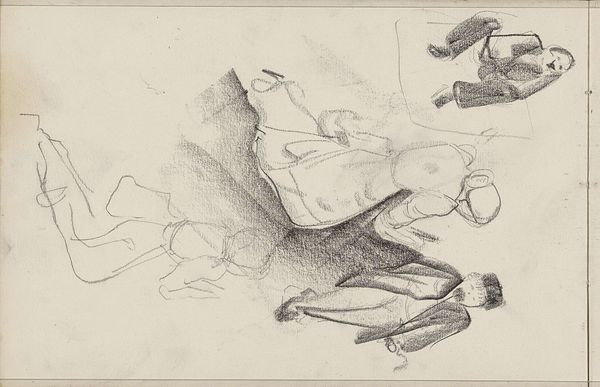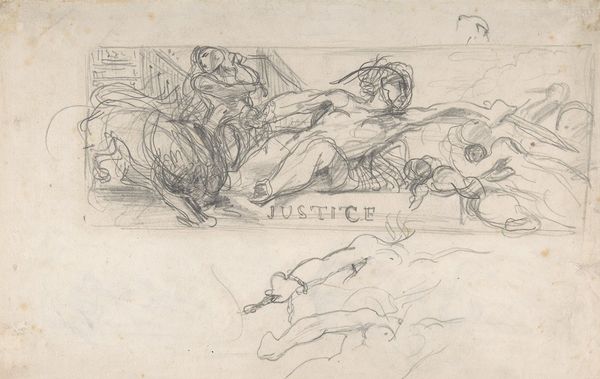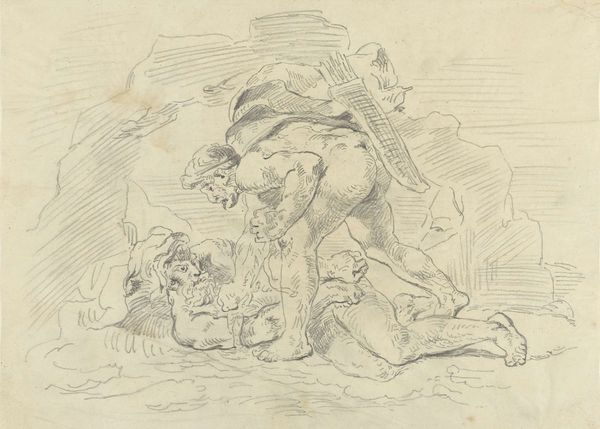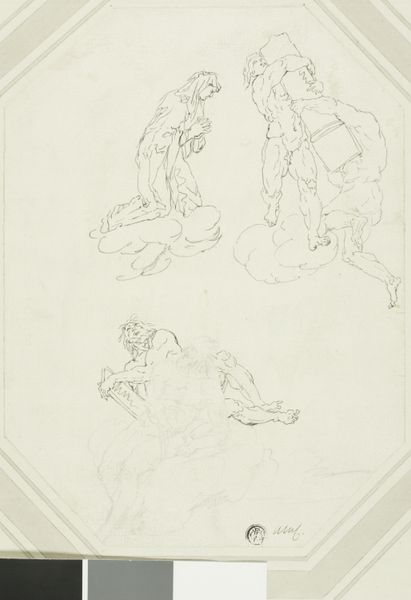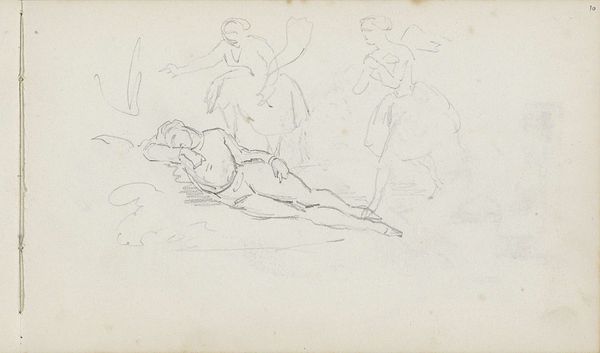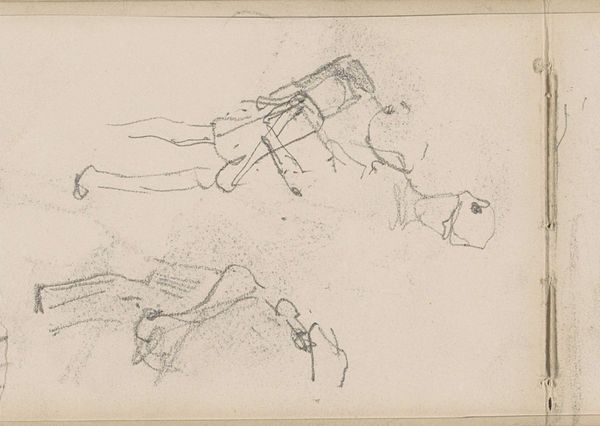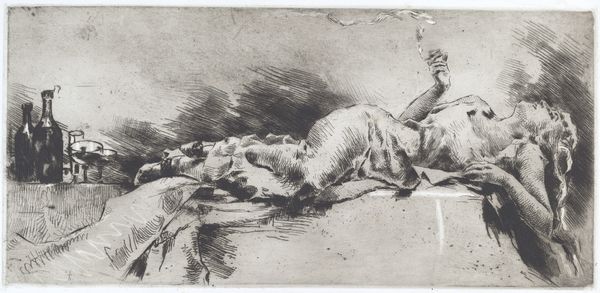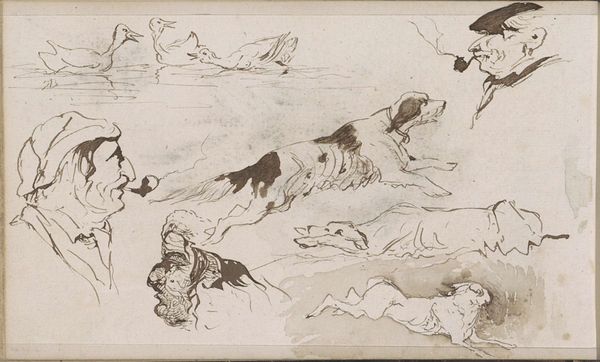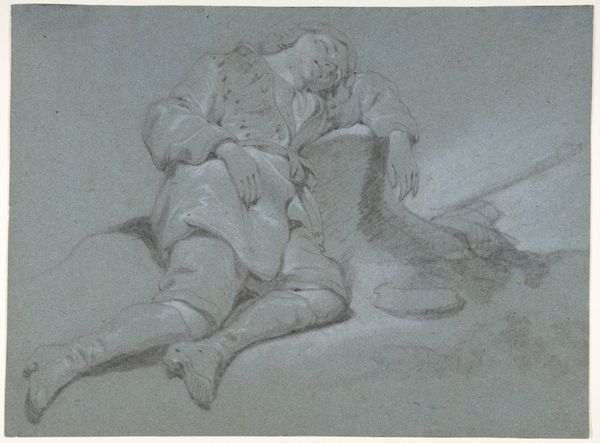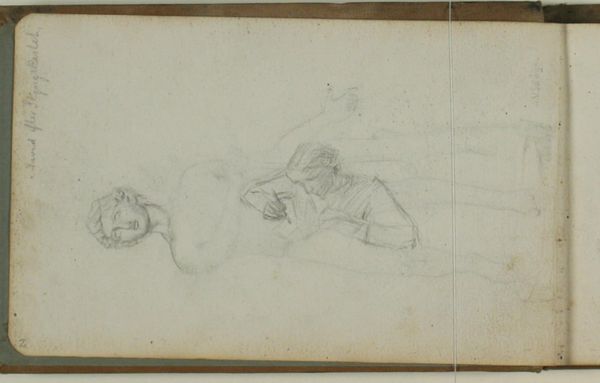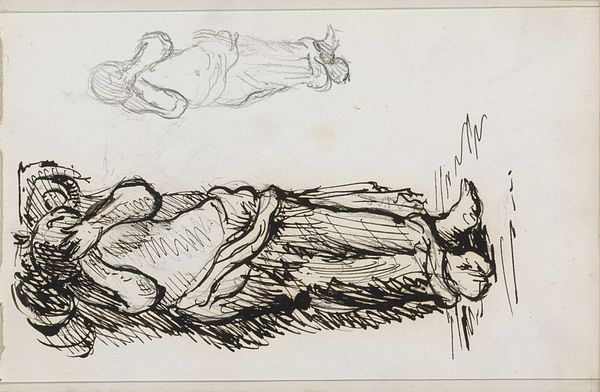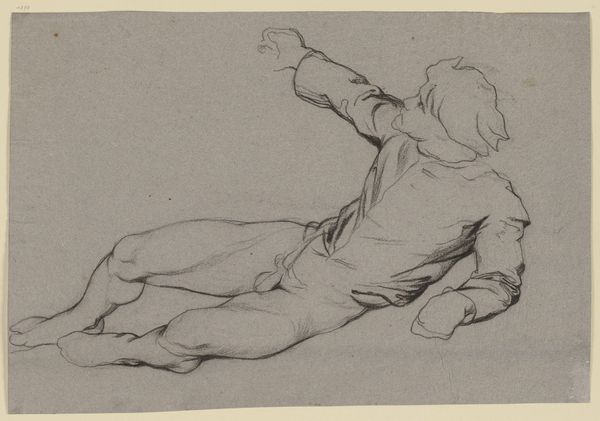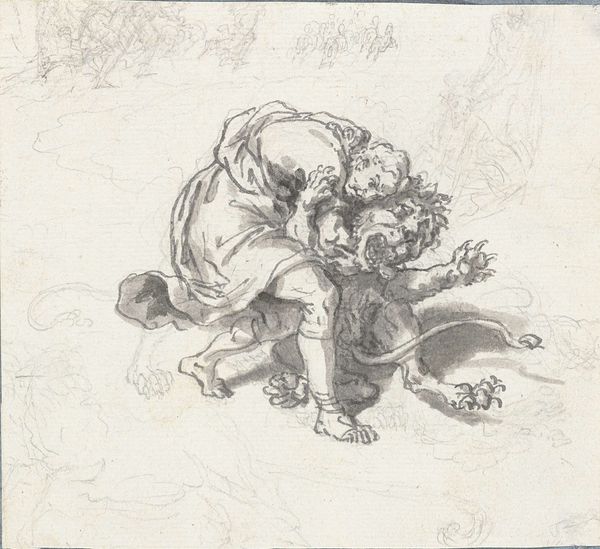
drawing, ink
#
drawing
#
narrative-art
#
figuration
#
ink
#
romanticism
#
history-painting
Copyright: Public Domain: Artvee
Curator: This ink drawing from 1830 is called "Study of Bodies 'Liberty Leading the People,'" made by Eugène Delacroix as he was developing his famous painting. Editor: It's stark, isn't it? Melancholic even. The figures seem caught between rest and...something more permanent. Curator: Yes, Delacroix's works often engage with grand themes—liberty, revolution—but look closer at how he sketches the figures here. The Romantic artists had an obsession with strong symbolic expression, often found in allegorical representations. Editor: Absolutely. He is clearly playing with classic notions of sacrifice and glory, while also questioning these power dynamics. Consider how the reclining bodies imply vulnerability rather than triumph. It highlights the very real cost paid by those involved. Curator: Notice too, how the bodies are composed within the drawing, they lack any hard-edged form. This stylistic element further suggests a dream state, blurring the space between life and death and adding layers of psychological complexity. It mirrors the emotional upheaval of the French Revolution. Editor: Right. It becomes a reflection of both a specific historical event, and more broadly, about the violence and chaos inherent in societal change. There’s no heroic victory on display; it's far more unsettling. Curator: Well, I would argue there is a sense of underlying optimism within the narrative. Delacroix presents complex themes associated with progress in ways that encourage emotional empathy. Editor: But aren't we as the audience, implicitly encouraged to confront our own relationship with power and freedom, as much as being encouraged to "feel?" Curator: Delacroix has definitely constructed visual signifiers throughout this preliminary drawing. Understanding these images in light of larger themes enriches our understanding and interpretation of history painting itself. Editor: Indeed, and perhaps a potent reminder of art's ongoing ability to provoke us, challenge us, and ultimately change how we perceive our collective history. Curator: Yes, this drawing becomes an entry point, reminding us of the power art holds as both a historical document and an exercise in questioning societal and political narratives.
Comments
No comments
Be the first to comment and join the conversation on the ultimate creative platform.
